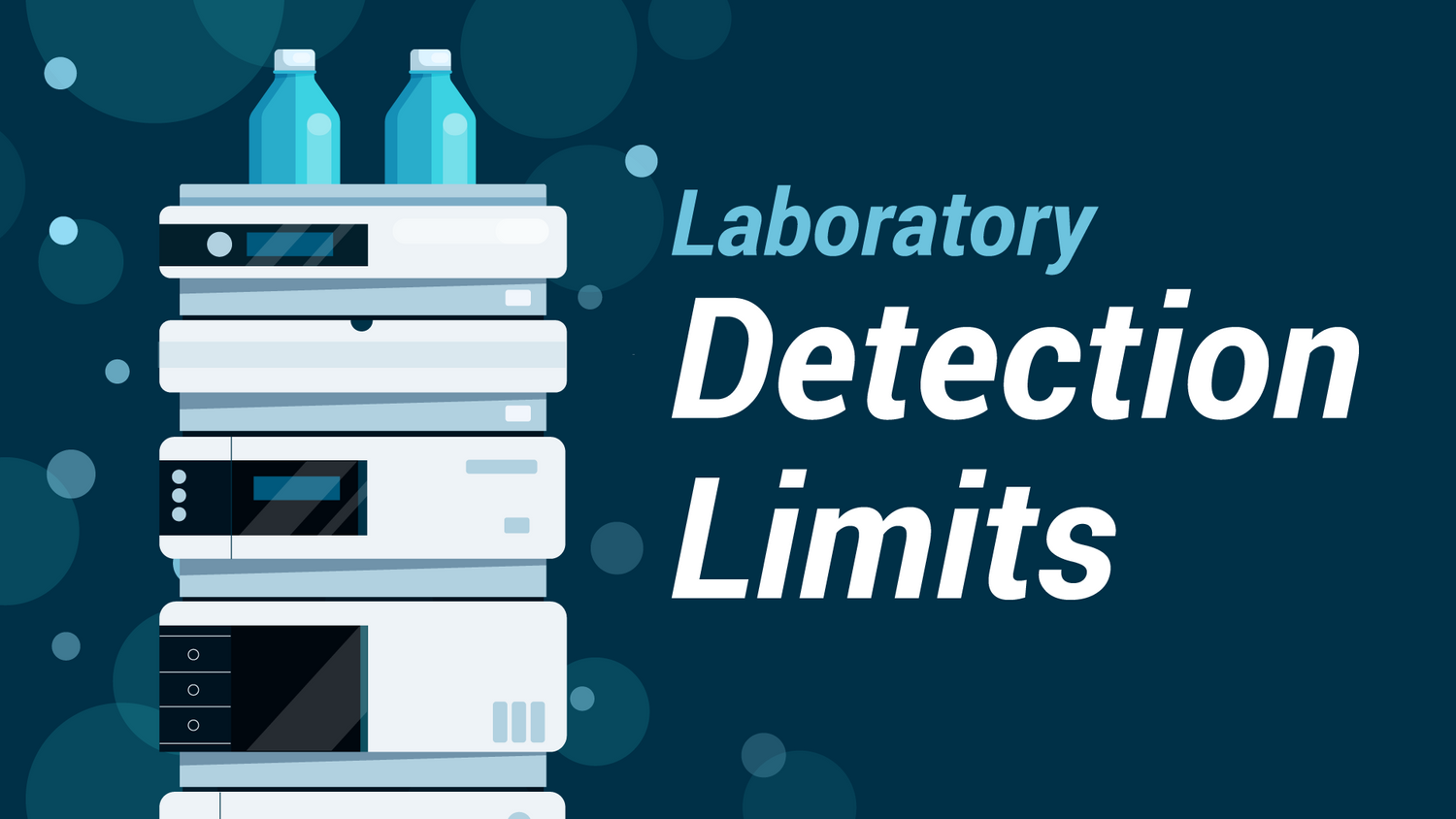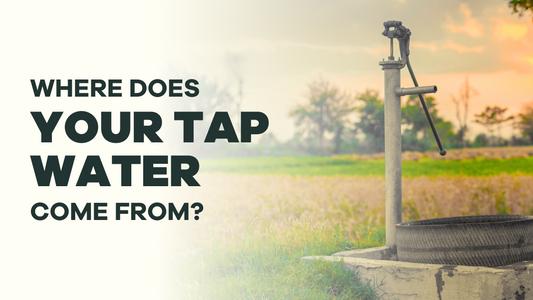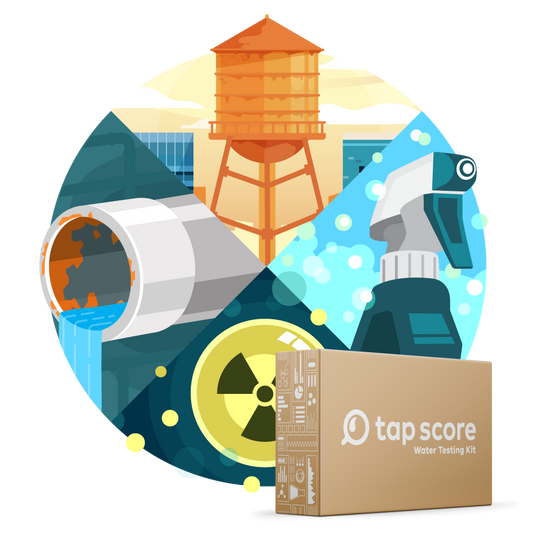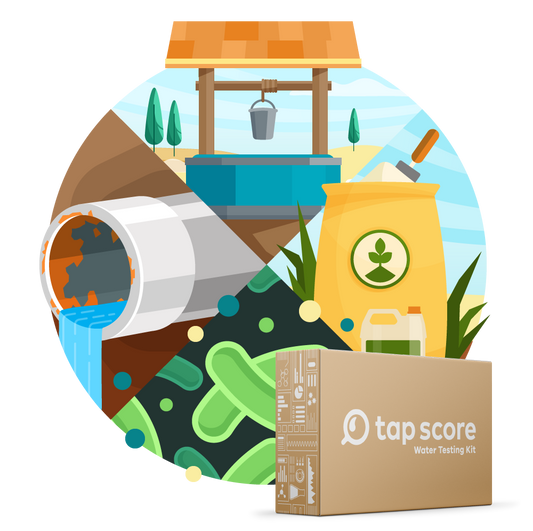
Laboratory Detection Limits Explained
Our blog is written by real experts— not AI. Each guide is carefully reviewed and updated based on the latest research. Plus, with no affiliate links, you can count on unbiased insights you can trust.
IDL, LOD, MDL, PQL, LOQ… How an analogy of sailboats and the rough sea can help explain laboratory limits of detection levels so that you can better understand your Tap Score Water Quality Report for chemical analyses.
All laboratory testing instruments and methods have an inherent minimum detection level–a concentration below which an instrument fails to measure something reliably. If you’re doing a laboratory water test then you want to know how low of a concentration your laboratory’s instruments can “see”.
Understanding this detection limits requires you to understand these 7 acronyms:
Compound of Interest (COI): The chemical, biological or radiological parameter (analyte) that you are trying to measure.
Background Noise (BN): The other compounds in your sample which are similar enough to your compound of interest that they interfere with your ability to differentiate your compound from this other stuff.
Limit of Detection (LOD): The concentration at which you detect your compound of interest but the concentration of your compound is too low to really distinguish from other compounds (background noise).
Instrument Detection Level (IDL): The lowest level at which the laboratory’s instrument can detect but not quantify a contaminant.
Method Detection Level (MDL): The lowest level at which the laboratory is confident in what it’s detecting.
Practical Quantification Limit (PQL): Level at which a laboratory is very confident in what it’s detecting and measuring concentrations.
Limit of Quantification (LOQ) or Reporting Limit (RL): The concentration at which you are confident enough to accurately quantify the concentration of your compound of interest.
Helpful Analogy: Sailboats On The Horizon
To understand your water quality, we want to know if a compound exists in your water and if it can be quantified (a concentration above the LOQ) or if a compound is present, but the concentrations are too low to be quantified (a concentration above the LOD, but below the LOQ). If this sounds confusing, we understand. So, we are going to use an analogy to explain detection limits.
Imagine yourself standing on a beach and looking out towards the horizon, trying to see a sailboat far, far away at sea. You squint your eyes, looking for the white, triangle shape of a sail.
But so far away, it’s difficult to know for sure what you can see. Is that a sailboat out there? Is it a rowboat? Is that just the white tip of a distant wave?
What is the Limit of Detection (LOD)?
Imagine now that at some closer distance, still quite far away, you are able to confidently say that you do see a boat. You definitely see something. However, you can’t be totally sure how big the boat is. This kind of confidence–that you can see something for sure, corresponds to what laboratory sciences call the limit of detection (LOD). While you do see something, it’s not clear how big the boat is (i.e. the concentration).
For lab instruments, it’s the same. Imagine we have different people (i.e. different instruments) on the shore. They each have binoculars with different magnification strengths. Those people (i.e. instruments) with higher magnification binoculars will be able to see the boat earlier and confidently say that they see a sailboat. You can take this analogy a step further too. Imagine it’s a rough day at sea. When it’s a rough day at sea the distance at which you can see something confidently must be even closer to you when you look for the sailboat on a clear day. As such, the LOD can, and does vary. It will change depending on the instrument being used and the background noise (storminess) of the water sample you're testing.
The method used with a specific instrument can also introduce additional factors that influence detection limits. For a given method, the ability to see the sailboat with a high level of confidence is called the method detection level (MDL). The MDL is the smallest amount we can see of something using a particular pair of binoculars and still be 99% sure that we see a sailboat and not a white cap.
In summary, the limit of detection depends on the instrument used and the method used. LODs indicate the concentration at which you are confidently able to detect a compound of interest without quantifying how much of that compound exists–a contaminant at the concentration of the LOD is too low for us to distinguish it from background noise. While the IDL can influence and impact the MDL, the MDL ultimately determines a laboratory’s LOD.
What is the Limit of Quantification (LOQ)?
Of course, we want to know at what distance we can look out at the horizon, see a sailboat and be very confident in assessing how big the sailboat is. We can see the flapping of the sail and the people running around on the deck. We can even measure the height of the sail. In contrast to the LOD, the limit of quantification (LOQ) allows us to see the sailboat and how tall its sail is. The LOQ determines the concentration at which you are confident enough to say what you see AND how much of it you see.
While there is no such thing as ever being 100% sure, there is the LOQ. The LOQ is calculated based upon a loose set of recommendations and guidelines that help establish what it means to be very confident of what you see and how much of it you can see accurately. This usually means the lab is detecting something that is 5-10X more intense (more obvious) than its surroundings (“background noise”).
How to Determine the Limit of Quantification (LOQ)?
Labs determine their limit of quantification by placing their own sailboat out in the water. You know the height of your sailboat. This is called your standard. You go back to the beach and look out at the horizon. You see your sailboat. Check.
Then you then keep moving the boat further away from the shore (i.e. diluting your sample) until your boat’s sail is just distinguishable from the white caps around it. This is the signal (the sailboat) to noise (the white caps) ratio.
Again, the Limit of Quantification (LOQ) is the lowest concentration at which we are confident we can detect our compound of interest and confidently determine its concentration (e.g. the height of the sail). In the language of sailboats, it’s the furthest away that you can be confident that you’re seeing your sailboat and not white-caps or another boat.
Various labs will calculate their LOQ in different ways. For example:
LOQ = LOD x 10 OR
LOQ = MDL x 6
Ultimately, it’s up to the laboratory to decide what they are very confident of (whether they see a signal with intensity 6, 10 or 20 times higher than the background noise).









